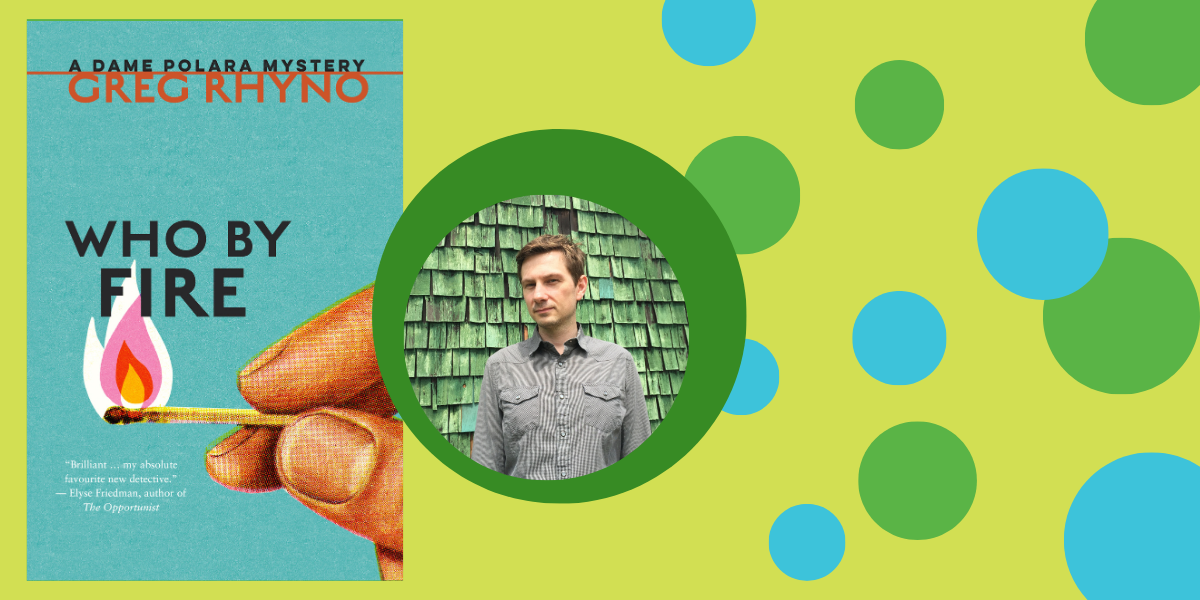
Greg Rhyno
Mysteries can be a great distraction, but more than that, they offer something quite rare: a solvable problem. Many of our real-world problems are decidedly unsolvable, but when you read a good mystery, you’re not only guaranteed an eventual solution, you can often solve the problem yourself.
What led you to transition from To Me You Seem Giant, a literary fiction novel centred on music, to the modern mystery detective genre with Who by Fire, your latest novel?
Why did Beyoncé put out a country album? Why did André 3000 make a flute record? Genre is an exciting way to reimagine yourself. Some of my favourite writers — Paul Auster, Thomas King, Jonathan Lethem — have experimented with the conventions of detective fiction, and I wanted to see what I could do with it.
Are there any lessons you learned from writing your first novel that has influenced your process with Who by Fire?
The most important lesson I learned from writing To Me You Seem Giant is that novels are finite. Until I actually sat down and wrote one, the novel seemed very intimidating — an endless vessel filled with endless possibility. Now I know that a novel is no different from a poem, a song, a short story, a joke. It just takes a little longer to write.
Do you have any thoughts on why the mystery genre continues to be so popular these days, not only in books but across other media as well?
Mysteries can be a great distraction, but more than that, they offer something quite rare: a solvable problem. Many of our real-world problems are decidedly unsolvable, but when you read a good mystery, you’re not only guaranteed an eventual solution, you can often solve the problem yourself, which can be incredibly gratifying.
How do you keep track of all the details that go into a detective story? What type of planning do you do before sitting down to write?
I didn’t do enough planning when I sat down to write Who by Fire, and as a result, I had to do a lot of rethinking and a lot of rewriting. My notes looked a bit like a conspiracy theorist’s evidence board. Now that I’m writing the sequel to Who by Fire, the process is a little more streamlined. I’ve learned to work backwards from the crime scene, and to keep a closer eye on clues and suspects. A lot of lessons that Dame Polara learns in the novel, I was learning right alongside her.
Who by Fire features a structure of two alternate timelines, with Dame’s present-day narrative and her memories of the past. What appeals to you about this kind of narrative structure?
To Me You Seem Giant certainly uses alternating timelines, but Who by Fire is more rooted in the present and uses flashback to explore Dame’s character. I’m interested in the tension between the past and present, and in particular, how time can change a character. To what degree are we the same people from day to day and year to year?
This is the first story you have planned for Dame Polara. Without giving anything away, what sort of mysteries, locations, or situations do you hope to explore with the character in future books?
Dame Polara is a reluctant detective so, going forward, she’ll only use her talents in the most dire of circumstances. Dame is trying very hard to live what she considers a “normal life” full of family and friends, but unfortunately, the closer she comes to living that life, the more she has to lose. Bad things are going to happen to the people Dame loves most.
